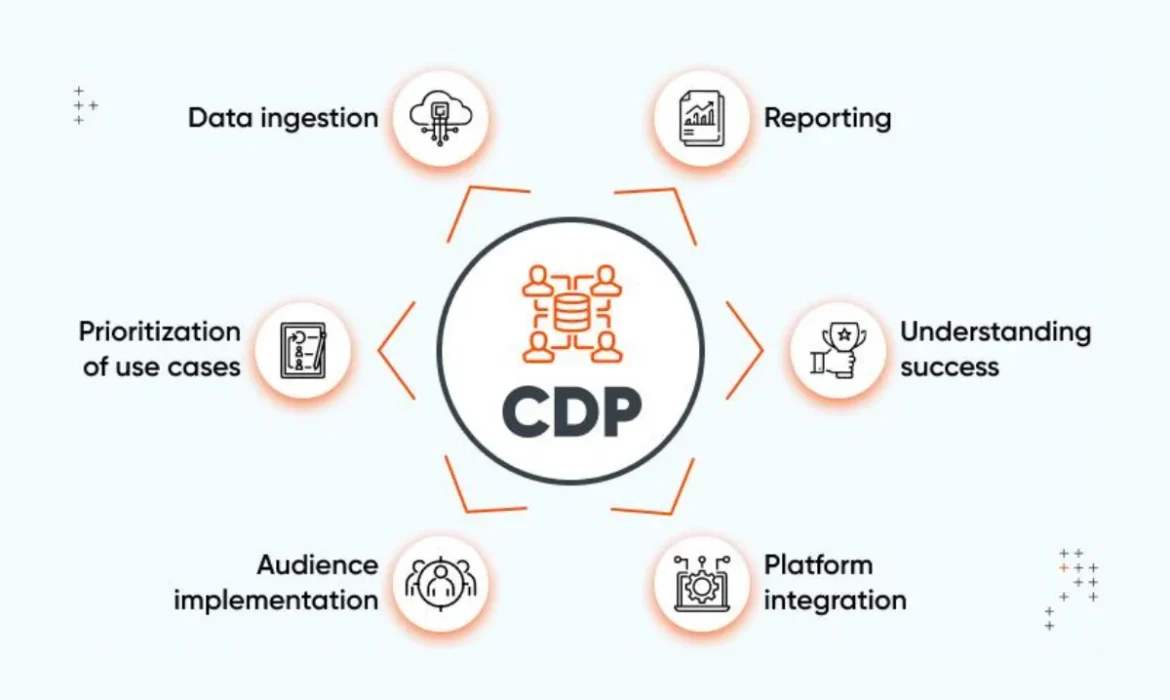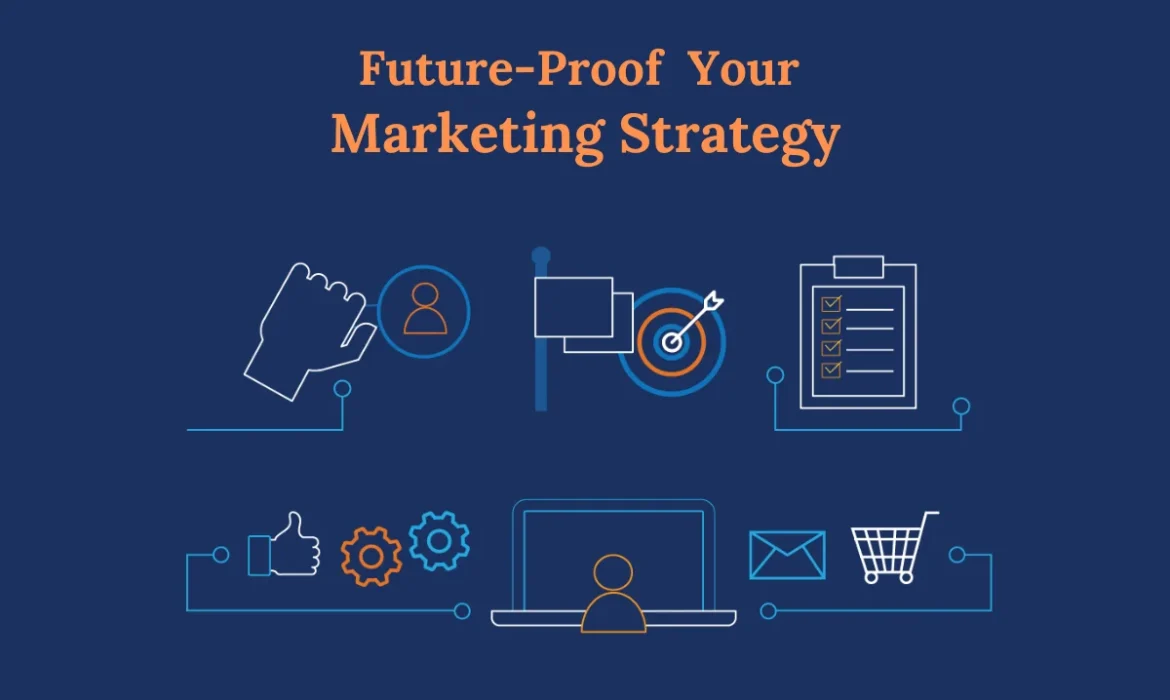Role of Customer Data Platforms in Marketing
Data is the backbone of effective marketing strategies in today’s digital age. Understanding customer behavior, preferences, and needs allows businesses to create targeted and personalized marketing campaigns. This is where Customer Data Platforms (CDPs) come into play. CDPs have emerged as essential tools in the marketing ecosystem, enabling businesses to harness customer data efficiently and effectively.
In this article, we’ll explore the critical role of CDPs in marketing, their benefits, and how they can transform your marketing strategy.
What is a Customer Data Platform (CDP)?
A Customer Data Platform (CDP) is a software solution that collects, organizes, and unifies customer data from various sources. Unlike traditional data management systems, CDPs focus on creating a single, comprehensive view of each customer by consolidating data from multiple touchpoints, such as websites, social media, email, and more.
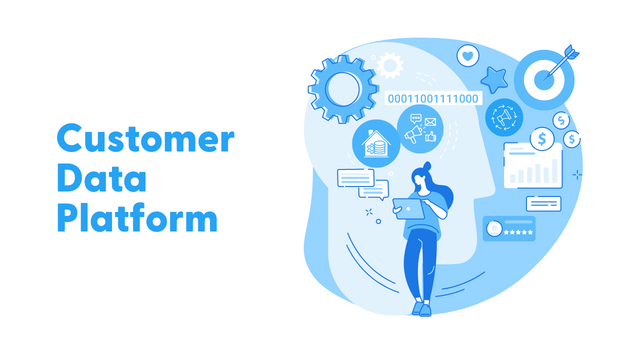
This unified customer profile is then accessible to marketers for more personalized and targeted marketing efforts.
How Do CDPs Work?
1. Data Collection
CDPs collect data from various sources, including online and offline interactions, CRM systems, transactional databases, and third-party data providers. This data includes demographic information, browsing behavior, purchase history, and social media activity.
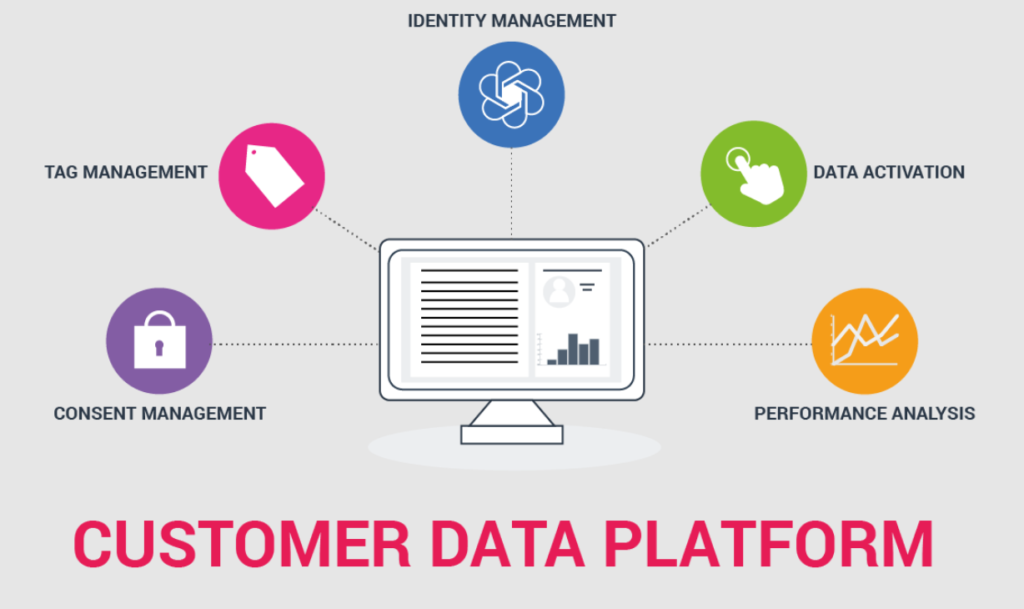
2. Data Unification
The collected data is then processed and unified into a single customer profile. This step involves deduplication, cleansing, and normalization of data to ensure accuracy and consistency.
3. Data Activation
Once unified, the data is made accessible to marketing tools and platforms, allowing businesses to create highly personalized and targeted campaigns. Customer Data Platforms enable seamless integration with various marketing channels, including email marketing, social media, and advertising platforms.
4. Insights and Analytics
CDPs provide advanced analytics and insights into customer behavior and campaign performance. Marketers can track key metrics, such as customer lifetime value, engagement rates, and conversion rates, to optimize their strategies.
The Importance of CDPs in Marketing
1. Personalization at Scale
CDPs allow businesses to deliver personalized experiences to customers across all touchpoints. By leveraging unified customer data, marketers can create tailored content and offers that resonate with individual preferences, leading to higher engagement and conversion rates.

2. Improved Customer Engagement
With a comprehensive view of customer interactions, CDPs enable businesses to engage with customers in real time. This real-time engagement is crucial for responding to customer needs promptly and effectively, fostering stronger relationships.
3. Enhanced Data Accuracy
Traditional data management systems often suffer from data silos, leading to inconsistencies and inaccuracies. CDPs eliminate these issues by centralizing data, ensuring that marketers have access to reliable and up-to-date information.
4. Efficient Marketing Campaigns
CDPs streamline the marketing process by automating data collection, segmentation, and campaign execution. This efficiency not only saves time but also enhances the effectiveness of marketing efforts, leading to better ROI.
5. Compliance with Data Regulations
In an era of stringent data privacy regulations, CDPs play a crucial role in ensuring compliance. They provide features that help businesses manage customer consent, data access, and storage in accordance with laws such as GDPR and CCPA.
6. Cross-Channel Consistency
CDPs ensure that customers receive consistent messaging across all channels. This consistency is vital for building brand trust and delivering a seamless customer experience, regardless of the platform or device used.
How CDPs Differ from CRMs and DMPs
CDP vs. CRM
While Customer Relationship Management (CRM) systems focus on managing customer interactions and sales processes, Customer Data Platforms go a step further by integrating data from multiple sources to create a unified customer profile. CDPs are designed for marketing purposes, providing deeper insights and personalization capabilities.
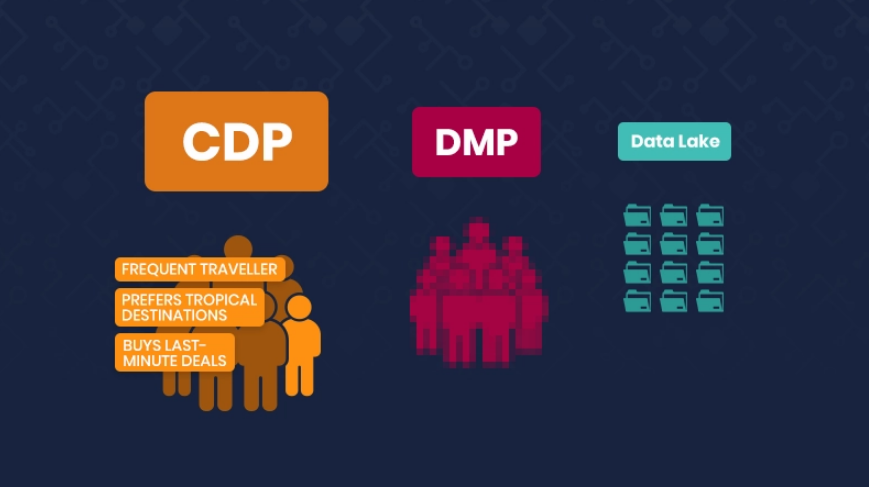
CDP vs. DMP
Data Management Platforms (DMPs) primarily deal with anonymous data for advertising purposes, often focusing on third-party data. In contrast, CDPs handle first-party data, offering a more comprehensive and personalized view of individual customers.
Implementing a CDP: Best Practices
Before implementing a CDP, it’s essential to define clear objectives. Identify the specific marketing challenges you aim to address, such as improving personalization, enhancing customer engagement, or optimizing campaign performance.
Selecting the right CDP for your business is crucial. Consider factors such as scalability, integration capabilities, data security, and ease of use. Ensure that the chosen CDP aligns with your business needs and long-term goals.
Ensure seamless integration of all relevant data sources into the CDP. This integration is vital for creating a unified customer profile and maximizing the benefits of the platform.
Future Trends in CDPs
AI-Powered CDPs
The integration of artificial intelligence (AI) into CDPs is expected to revolutionize customer data management. AI-powered CDPs can automate data processing, enhance predictive analytics, and provide more accurate insights, leading to even more effective marketing strategies.
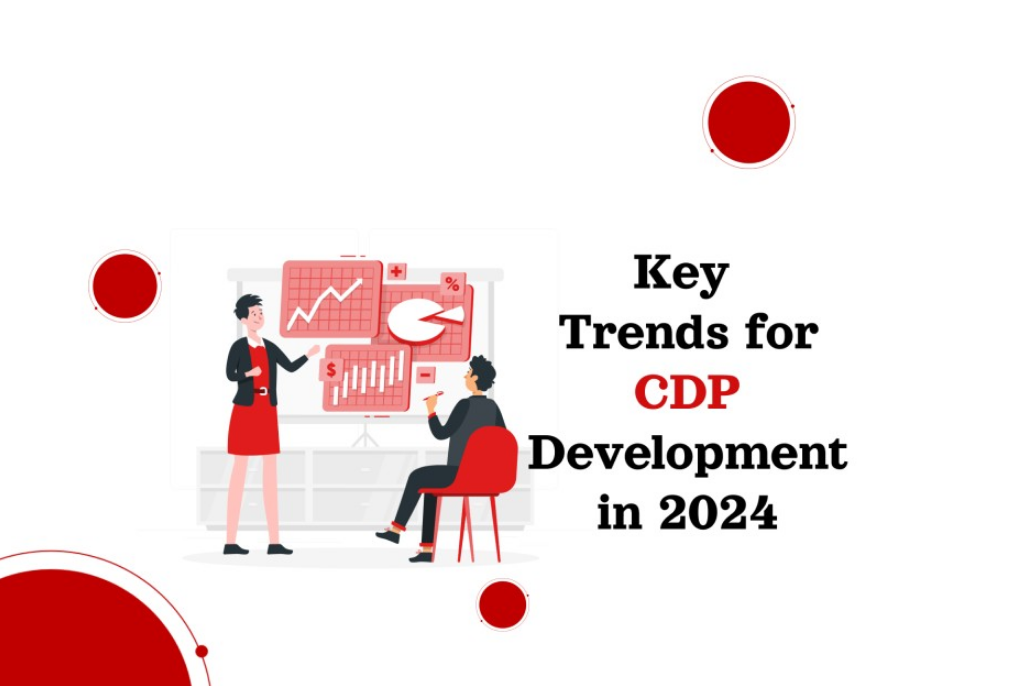
CDPs for SMBs
As CDP technology becomes more accessible, small and medium-sized businesses (SMBs) are increasingly adopting CDPs to enhance their marketing efforts. This trend is likely to grow as more affordable and user-friendly CDP solutions become available.
Privacy-Centric CDPs
With growing concerns over data privacy, the future of CDPs will likely see a greater emphasis on privacy-centric features. These features will help businesses navigate the complexities of data regulations while maintaining customer trust.
Conclusion
Customer Data Platforms (CDPs) have become indispensable tools for modern marketers. By unifying customer data and providing actionable insights, CDPs enable businesses to deliver personalized and targeted marketing campaigns that drive engagement and ROI.
As the digital landscape continues to evolve, the role of CDPs in marketing will only become more critical, offering new opportunities for businesses to connect with their customers in meaningful ways.
Read more : How To Future-Proof Your Marketing Strategy
FAQs
A CDP’s primary function is collecting, unifying, and making customer data accessible for personalized and targeted marketing efforts.
CDPs integrate data from multiple sources to create a unified customer profile for marketing, while CRMs focus on managing customer interactions and sales processes.
Yes, small and medium-sized businesses can significantly benefit from CDPs by enhancing personalization and optimizing their marketing strategies.
Yes, most CDPs offer features that help businesses manage customer data in compliance with privacy regulations like GDPR and CCPA.

Alex Mitch
Welcome to my blog! With over 10 years in digital marketing , I’ve seen its incredible impact on smaller businesses. Join me as we explore how digital marketing can grow your audience and boost your business. Whether you’re an experienced entrepreneur or just starting out, you’ll find practical tips and insights to enhance your digital marketing strategies.
How To Future-Proof Your Marketing Strategy
In today’s rapidly evolving digital landscape, staying ahead of the curve is crucial for long-term success. Future-proofing your marketing strategy ensures your business remains relevant, competitive, and adaptable.
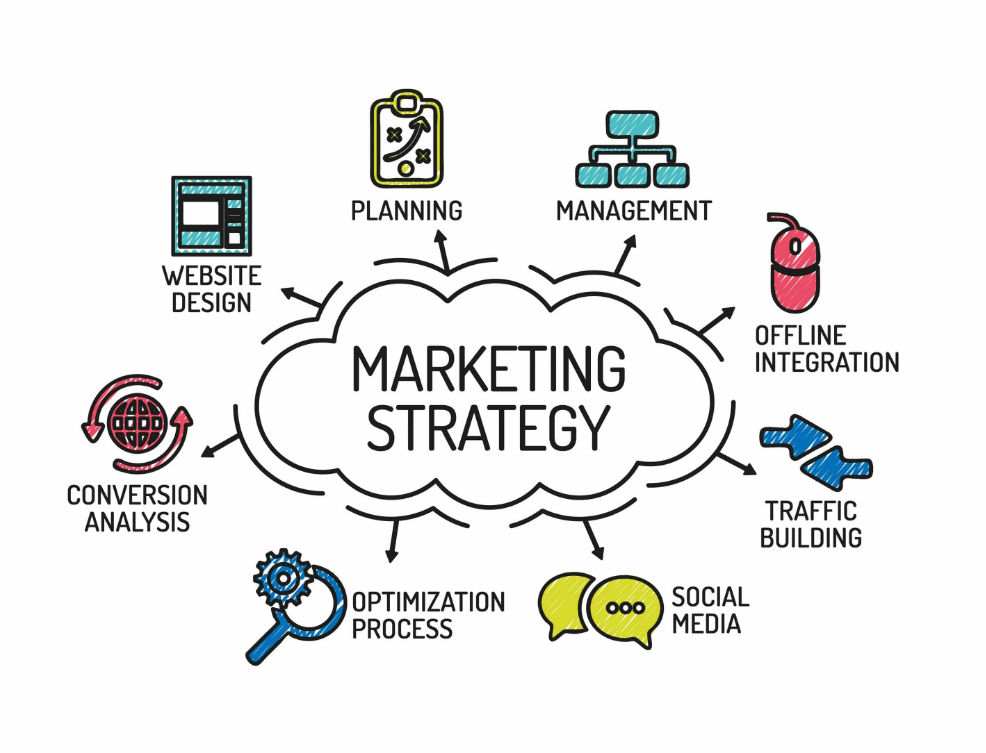
This blog will explore the best tips to future-proof your marketing strategy, helping you secure sustainable growth.
Strategies You Should Know
When it comes down to the strategies for future proofing your marketing efforts. There are numerous plans you may find over the internet. However, the excessive availability of information may confuse you into making a wrong decision.
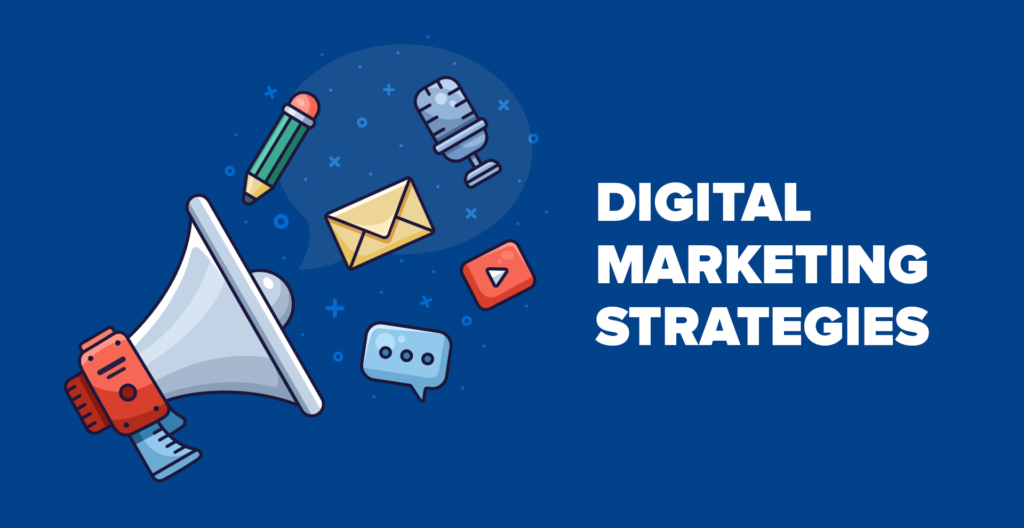
Here we have brought some recommended strategies for you
Embrace Digital Transformation
Digital transformation is no longer optional; it’s essential. By integrating digital technologies into all aspects of your marketing strategy, you can streamline operations, enhance customer experiences, and stay competitive. Focus on data-driven decision-making, automation, and AI-powered tools to optimize your campaigns and personalize customer interactions.
Invest in Data Analytics
Data is the backbone of modern marketing. By investing in advanced data analytics tools, you can gain valuable insights into customer behavior, preferences, and trends. This allows you to make informed decisions, tailor your marketing strategies, and predict future trends, ensuring your campaigns remain effective.

Focus on Customer-Centric Marketing
Understanding your customers’ needs, preferences, and pain points is crucial for long-term success. Create personalized, customer-centric marketing campaigns that resonate with your audience. Leverage CRM systems and AI-driven tools to deliver targeted content, offers, and experiences that foster loyalty and drive conversions.
| Point | Explanation |
| 1. Deep Customer Understanding | Conduct thorough research to understand your customers’ demographics, behaviors, and preferences. Use surveys, interviews, and data analytics to gather insights that will help tailor your marketing strategies. |
| 2. Personalization | Leverage CRM systems and AI-driven tools to create personalized marketing messages, product recommendations, and offers. Personalization enhances customer experiences by making them feel valued and understood. |
| 3. Customer Journey Mapping | Map out the entire customer journey from awareness to post-purchase. Identify key touchpoints and optimize them to ensure a seamless and positive experience at every stage. |
| 4. Feedback and Continuous Improvement | Regularly collect feedback from customers to understand their evolving needs and pain points. Use this feedback to continuously improve your products, services, and marketing strategies. |
| 5. Building Emotional Connections | Focus on building strong emotional connections with your customers by understanding their values and aligning your brand messaging with their beliefs. This fosters loyalty and long-term relationships. |
Stay Agile and Adaptable
The ability to quickly adapt to changes in the market is a key component of future-proof marketing. Adopt an agile marketing approach that allows you to test, iterate, and pivot your strategies based on real-time data and feedback. This flexibility will help you stay ahead of competitors and respond effectively to new opportunities.
Invest in Content Marketing
Content marketing remains a powerful tool for engaging customers and building brand authority. Focus on creating high-quality, evergreen content that provides value to your audience. Explore different formats, such as blogs, videos, podcasts, and infographics, to reach a wider audience and improve your SEO rankings.
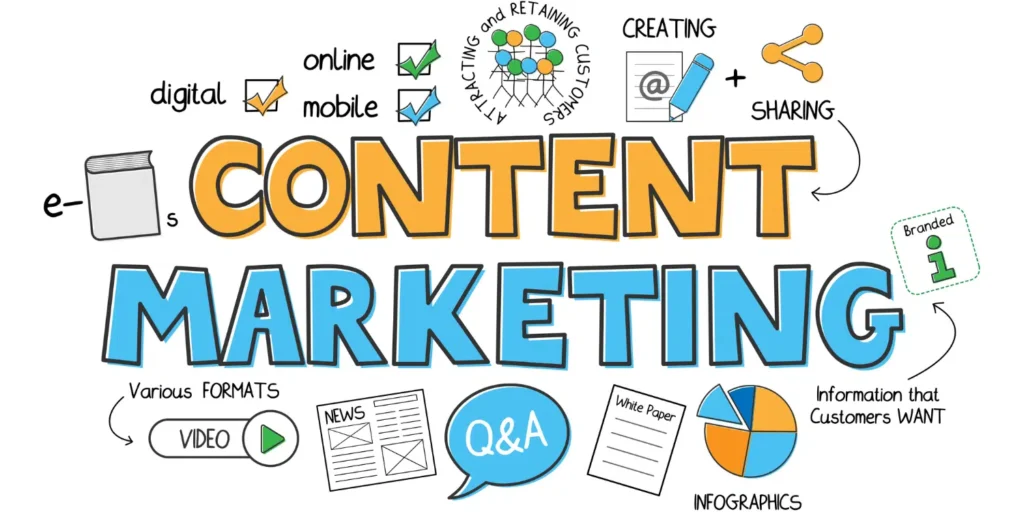
Create Evergreen Content:
Focus on producing content that remains relevant and valuable over time. This includes how-to guides, case studies, and in-depth articles that your audience can refer to long after they’ve been published, helping you build long-term traffic and authority.
Diversify Content Formats:
Don’t limit yourself to just blogs. Incorporate videos, podcasts, infographics, and other multimedia formats to cater to different audience preferences, ensuring that your content reaches a broader audience and enhances user engagement.
Enhance SEO Performance:
Quality content naturally attracts backlinks, improves user experience, and increases dwell time on your site, all of which contribute to better SEO rankings. Consistently updating and optimizing your content helps maintain its relevance and search engine visibility.
Leverage social media and Influencer Marketing
Social media platforms continue to be a dominant force in digital marketing. To future-proof your strategy, maintain a strong social media presence and engage with your audience regularly. Collaborate with influencers who align with your brand values to amplify your reach and credibility.
Maintain a Strong Social Media Presence:
Regularly engage with your audience on social media platforms to build a loyal community and keep your brand top-of-mind. Active participation ensures your brand stays relevant and responsive to trends.
Collaborate with Influencers:
Partner with influencers who share your brand values to expand your reach and enhance credibility. Their endorsements can significantly boost your brand’s visibility and trustworthiness among target audiences.
Prioritize Sustainability and Social Responsibility
Consumers are increasingly looking for brands that prioritize sustainability and social responsibility. Incorporate ethical practices into your marketing strategy, such as promoting eco-friendly products, supporting social causes, and being transparent about your business practices. This not only enhances your brand image but also builds trust and loyalty among consumers.
Conclusion
Future-proof your marketing strategy is crucial for long-term success in an ever-changing digital world. By embracing digital transformation, investing in data analytics, focusing on customer-centric marketing, and staying adaptable, your brand can thrive amidst uncertainty. Additionally, leveraging content marketing, social media, and emerging technologies will help you stay ahead of the curve and build a strong, sustainable brand.
Read more : Top Digital Marketing Tools You Need in 2024
FAQs
Future-proofing your marketing strategy means adopting practices, tools, and approaches that ensure your marketing efforts remain effective and relevant in the face of changing trends, technologies, and consumer behaviors.
Digital transformation is crucial because it allows businesses to leverage new technologies, optimize operations, and deliver personalized experiences that meet modern consumer expectations.
Data analytics provides insights into customer behavior and preferences, enabling you to make informed decisions, tailor your campaigns, and predict future trends, ultimately improving the effectiveness of your marketing strategy.
Social responsibility enhances your brand image, builds trust with consumers, and meets the growing demand for ethical and sustainable practices, which are increasingly important to modern consumers.

Alex Mitch
Welcome to my blog! With over 10 years in digital marketing , I’ve seen its incredible impact on smaller businesses. Join me as we explore how digital marketing can grow your audience and boost your business. Whether you’re an experienced entrepreneur or just starting out, you’ll find practical tips and insights to enhance your digital marketing strategies.
Top Digital Marketing Tools You Need in 2024
In the fast-paced world of digital marketing, staying ahead of the curve is essential. As 2024 starts, a range of innovative tools is reshaping the landscape, enabling marketers to optimize campaigns. Moreover, analyze data more effectively, and engage audiences with precision. Here’s a look at the top digital marketing tools you need in 2024.
Digital Marketing Tools
Digital marketing tools are software or platforms that help businesses plan, execute, and analyze their online marketing efforts. They assist in tasks such as search engine optimization (SEO), content marketing and creation, social media management, email marketing, and data analysis.
These tools enable marketers to reach their target audience, track the effectiveness of campaigns, and optimize strategies for better results. By leveraging these tools, businesses can improve their online presence, drive traffic, and increase conversions.
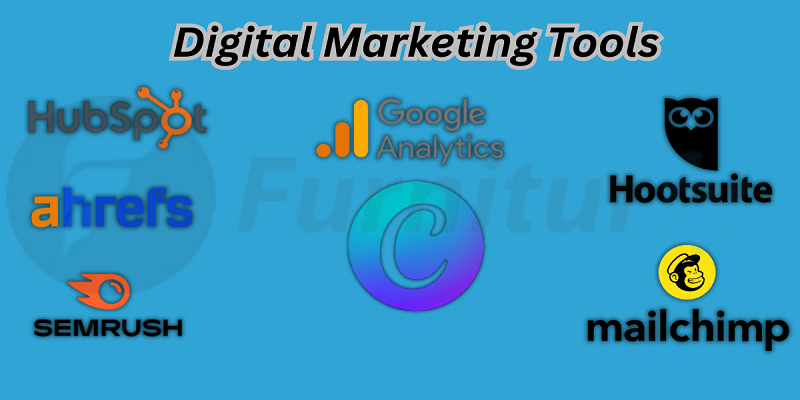
SEMrush
SEMrush is a powerful tool in digital marketing. It offers tools for SEO, PPC, content marketing, and competitor analysis. In 2024, SEMrush uses AI to improve keyword research, backlink analysis, and site audits. This helps businesses stay ahead in search rankings.
It’s user-friendly and gives insights that make marketing strategies more effective. SEMrush is essential for anyone looking to optimize their online presence.
| Feature | Description |
| Comprehensive Toolset | SEMrush offers a wide range of tools for SEO, PPC, content marketing, and competitor analysis. |
| AI-Enhanced Features | In 2024, SEMrush uses AI to enhance keyword research, backlink analysis, and site audits, offering more accurate and actionable insights. |
| Improved Keyword Research | AI-driven keyword research helps identify high-impact keywords faster, improving search rankings and targeting. |
| Advanced Backlink Analysis | SEMrush’s AI-enhanced backlink analysis provides deeper insights into backlink quality, helping businesses build stronger SEO profiles. |
| User-Friendly Interface | The platform is designed for ease of use, providing intuitive navigation and clear insights that help refine marketing strategies. |
HubSpot
HubSpot is an all-in-one platform for marketing, sales, and service. It has a strong CRM system and powerful email marketing tools. In 2024, HubSpot excels in automating customer journeys. It helps businesses track customer engagement and improve conversions.
HubSpot’s easy-to-use interface makes it a favorite for creating personalized marketing campaigns. It’s a go-to tool for growing businesses.
Canva
Canva is a top choice for creating visual content. It’s easy to use, even for beginners. In 2024, Canva’s new AI design tools make creating professional graphics quick and simple. Whether you need social media posts or marketing materials, Canva has you covered. It’s ideal for anyone who wants to make stunning content without a design background. Canva is essential for visual marketing.
- AI-Powered Design Assistance: Canva’s new AI tools in 2024 help users generate professional designs quickly, offering suggestions and automating elements to match your brand’s aesthetic.
- Versatile Content Creation: Whether you’re creating social media posts, flyers, or presentations, Canva offers a wide range of templates and customization options to suit all your visual content needs.
- User-Friendly Interface: Designed for ease of use, Canva is accessible to everyone, even beginners with no design experience, making it an essential tool for effective visual marketing.
Google Analytics 4 (GA4)
Google Analytics 4 (GA4) has revolutionized the way businesses track and analyze user behavior across websites and mobile apps. Unlike its predecessor, GA4 integrates enhanced machine learning capabilities, enabling businesses to gain deeper insights into customer journeys. It offers predictive metrics, such as the likelihood of users to make a purchase or churn, helping marketers make data-driven decisions.
GA4’s event-based tracking system allows for more precise measurement of user interactions, providing a holistic view of user engagement. In 2024, GA4 is an essential tool for businesses looking to stay ahead in the competitive digital landscape.
Hootsuite
Hootsuite remains a leading social media management tool, empowering marketers to efficiently handle multiple social media accounts. With its robust platform, Hootsuite allows users to schedule, monitor, and analyze social media content across various channels from a single dashboard.
In 2024, Hootsuite has further enhanced its platform with AI-driven features that help marketers craft better-performing posts by analyzing past content and predicting engagement. Additionally, Hootsuite’s automation capabilities have been upgraded to streamline repetitive tasks, such as posting and reporting, making social media management more efficient and effective for businesses.
Mailchimp
Mailchimp continues to be a top choice for email marketing in 2024, thanks to its user-friendly interface and powerful features. Known for its advanced segmentation capabilities, Mailchimp allows marketers to create highly targeted campaigns that resonate with specific audience segments.
The platform’s automation features enable users to set up drip campaigns, welcome series, and triggered emails, enhancing customer engagement and conversion rates. Additionally, Mailchimp offers robust analytics, providing insights into campaign performance and helping marketers optimize their strategies. Its ease of use combined with powerful functionalities makes Mailchimp a must-have tool for businesses aiming to excel in email marketing.
Ahrefs
Ahrefs is a favorite among SEO professionals for its comprehensive backlink analysis, keyword research, and content exploration tools. In 2024, its updated algorithms provide more accurate data, helping marketers refine their SEO strategies.
Conclusion
In 2024, the digital marketing landscape is more dynamic than ever, with tools that leverage AI and advanced analytics to optimize every aspect of marketing. By integrating these top tools into your strategy, you can stay ahead of the competition, make data-driven decisions, and achieve your marketing goals.
Explore More : When and How Digital Marketing Started in the World
FAQs
The importance of a tool depends on your specific needs, but SEMrush, with its comprehensive features for SEO and PPC, is a top contender.
Yes, tools like Canva and Google Analytics 4 offer free versions with robust features that can be used effectively in digital marketing strategies.
Identify your marketing goals, budget, and the specific needs of your business. Look for tools that offer the features you need and can scale as your business grows.
Many of these tools offer integrations with each other, allowing you to create a unified digital marketing ecosystem that enhances efficiency and performance.

Alex Mitch
Welcome to my blog! With over 10 years in digital marketing , I’ve seen its incredible impact on smaller businesses. Join me as we explore how digital marketing can grow your audience and boost your business. Whether you’re an experienced entrepreneur or just starting out, you’ll find practical tips and insights to enhance your digital marketing strategies.
How Autumn Furniture Show 2024 is Shaping the Future of Furniture
The Autumn Furniture Show 2024 offers a glimpse into the future of furniture design, innovation, and consumer trends. It’s clear how the Autumn Furniture Show 2024 is shaping the future of furniture as it redefines the industry with cutting-edge designs, sustainable practices, and the integration of smart technology. In this blog, we’ll explore how this event is set to transform the future of modern furniture.
Autumn Furniture Show 2024
The Autumn Furniture Show is a premier event showcasing the latest trends and innovations in the furniture industry. It attracts manufacturers, retailers, and designers, providing a platform for networking and collaboration. Attendees can explore a wide range of products, from contemporary to classic styles, and gain insights into emerging market trends. This event is essential for industry professionals looking to stay ahead and discover new opportunities in the evolving furniture landscape.

The Rise of Sustainable Furniture
One of the key themes at the Autumn Furniture Show 2024 is sustainability. With increasing awareness of environmental issues, consumers are more inclined to choose eco-friendly products. The show highlights this shift by featuring furniture made from recycled materials, responsibly sourced wood, and innovative manufacturing processes that minimize waste.
This trend is shaping the future of furniture by making sustainability a core value in design and production.
Smart Furniture: The Future is Now
Technology is rapidly transforming the furniture industry, and the Autumn Furniture Show 2024 is at the forefront of this revolution. Smart furniture, which integrates technology with traditional furniture designs, is a major attraction at this year’s show.
From sofas with built-in charging ports to beds that monitor sleep patterns, smart furniture is set to become a staple in modern homes. This trend reflects the growing demand for convenience and functionality, making smart furniture a key player in the future of home interiors.
| Point | Explanation |
| 1. Enhanced Connectivity | Smart furniture is equipped with IoT technology, allowing users to connect their devices seamlessly. This connectivity enhances the overall user experience by enabling control through smartphones or voice commands. |
| 2. Space Optimization | With the integration of multifunctional designs, smart furniture helps maximize space, especially in smaller homes. For example, foldable desks or beds with built-in storage can adapt to various needs without sacrificing style. |
| 3. Health and Wellness Features | Many smart furniture pieces incorporate health-monitoring capabilities. For instance, adjustable beds can track sleep patterns, while ergonomic chairs can remind users to maintain good posture, promoting overall well-being. |
| 4. Sustainable Practices | The development of smart furniture often emphasizes eco-friendly materials and energy-efficient technologies. This trend not only reduces environmental impact but also appeals to the growing number of consumers prioritizing sustainability in their purchases. |
| 5. Customization and Personalization | Smart furniture offers customizable features, allowing users to tailor their settings based on personal preferences. This level of personalization enhances user satisfaction and engagement, making furniture more than just functional but also uniquely suited to individual lifestyles. |
Innovative Designs and Materials
The Autumn Furniture Show 2024 is also a platform for innovation in design and materials. Exhibitors are showcasing furniture that pushes the boundaries of traditional design, using new materials like composite fibers and 3D-printed components.

These innovations are not just about aesthetics; they also offer improved durability and functionality. The show is a testament to how the furniture industry is evolving to meet the needs of modern consumers who value both style and practicality.
Cutting-Edge Materials: The use of composite fibers and 3D-printed components marks a significant shift from traditional wood and metal, allowing for lighter, more durable, and customizable furniture that meets modern demands.
Functional Innovation: Beyond just looking good, these materials offer practical benefits, such as increased strength, flexibility, and resistance to wear and tear, making the furniture more versatile and long-lasting.
Evolving Consumer Expectations: As consumers increasingly seek furniture that combines style with practicality, these innovative designs reflect a broader trend in the industry towards creating pieces that are not only visually appealing but also functional and adaptable to various lifestyles.
Embracing Minimalism and Multifunctionality
Minimalism continues to be a dominant trend in furniture design, and the Autumn Furniture Show 2024 is embracing this aesthetic with open arms. The show features a range of minimalist furniture that prioritizes simplicity and functionality. Multifunctional furniture, which serves multiple purposes in a compact form, is also gaining popularity.

This trend is particularly relevant for urban dwellers who need to make the most of limited space. The future of furniture is undoubtedly leaning towards designs that are both minimal and multifunctional.
Customization and Personalization
As consumers seek to express their individuality through their homes, the demand for customizable furniture is on the rise. The Autumn Furniture Show 2024 showcases a variety of customizable options, allowing consumers to tailor their furniture to their specific tastes and needs.
This trend is shaping the future of furniture by making it more personal and reflective of individual lifestyles.
Conclusion
The Autumn Furniture Show 2024 is a pivotal event that is shaping the future of the furniture industry. From sustainable practices and smart technology to innovative designs and customization, the show is setting the stage for the trends that will dominate the industry in the coming years. As consumers become more conscious of their choices and demand more from their furniture, the industry is responding with creativity and innovation. The future of furniture is not just about aesthetics; it’s about creating functional, sustainable, and personalized spaces that enhance our lives.
Read more : Top Furniture Trends from Autumn Furniture Show 2024
FAQs
The main themes are sustainability, smart furniture, innovative designs, minimalism, and customization.
Sustainability is highlighted through the use of eco-friendly materials, responsible sourcing, and innovative manufacturing processes.
Smart furniture integrates technology with traditional designs, offering features like built-in charging ports and sleep monitoring systems.
Minimalism is trending because it prioritizes simplicity and functionality, which are essential for modern living spaces.

Alex Mitch
Welcome to my blog! With over 10 years in digital marketing , I’ve seen its incredible impact on smaller businesses. Join me as we explore how digital marketing can grow your audience and boost your business. Whether you’re an experienced entrepreneur or just starting out, you’ll find practical tips and insights to enhance your digital marketing strategies.
Top Furniture Trends from Autumn Furniture Show 2024
The Autumn Furniture Show 2024 was a grand showcase of the latest trends in the furniture industry. Designers, manufacturers, and enthusiasts gathered to display and observe the newest innovations and styles. Let’s dive into the top trends that emerged from this prestigious event.

Autumn Furniture Show 2024
The Autumn Furniture Show 2024 is a premier event showcasing the latest trends and innovations in the furniture industry. It features a diverse range of styles, from sustainable and multifunctional pieces to bold colors and smart technology. Designers, manufacturers, and enthusiasts gather to explore cutting-edge designs and materials.

The show highlights the importance of personalization, sustainability, and practicality in modern furniture. It sets the tone for upcoming trends and influences the future of interior design.
Sustainable Furniture
Sustainability continues to dominate the furniture industry. This year, the focus was on using eco-friendly materials and manufacturing processes. Recycled wood, bamboo, and reclaimed metal were prominently featured. Brands are increasingly committed to reducing their carbon footprint, appealing to environmentally-conscious consumers.
Eco-Friendly Materials:
Furniture brands are emphasizing the use of recycled wood, bamboo, and reclaimed metal, offering stylish options without compromising on sustainability. This shift not only minimizes waste but also conserves natural resources.

Sustainable Manufacturing:
Companies are adopting green manufacturing processes, utilizing energy-efficient technologies and reducing harmful emissions. These practices align with growing consumer demand for environmentally responsible products.
Carbon Footprint Reduction:
Many brands are actively working to reduce their carbon footprint by sourcing materials locally and optimizing logistics. This commitment appeals to eco-conscious consumers who prioritize sustainability in their purchasing decisions.
Multifunctional Pieces
With urban living spaces becoming smaller, multifunctional furniture is more relevant than ever. The show highlighted innovative designs like sofa beds, extendable dining tables, and modular storage units. These pieces not only save space but also add a layer of practicality to modern homes.
One standout piece was a coffee table that transformed into a work desk, perfect for those working from home. Another popular item was a bed frame with built-in storage drawers, ideal for maximizing bedroom space. These versatile designs cater to the needs of city dwellers looking to make the most of their limited space.
Bold Colors and Patterns
The Autumn Furniture Show 2024 saw a departure from neutral tones, with bold colors and patterns taking center stage. Rich jewel tones like emerald green, sapphire blue, and deep burgundy were popular. Patterns such as geometric designs, florals, and abstract art added a vibrant touch to furniture pieces.

Vintage and Retro Styles
Vintage and retro styles made a significant comeback. Mid-century modern, Art Deco, and 1970s-inspired designs were prevalent. These styles bring a nostalgic charm, blending classic aesthetics with contemporary functionality. A standout trend was the resurgence of bold, geometric patterns and vibrant colors reminiscent of the 70s.
Iconic furniture pieces like Eames chairs and kidney-shaped tables were featured prominently. These designs not only add character to modern interiors but also offer a timeless appeal that transcends trends.
Smart Furniture
Smart furniture integration is a trend that continues to grow. Furniture with built-in technology, such as charging ports, Bluetooth speakers, and adjustable settings, cater to tech-savvy consumers looking for convenience and innovation in their home décor.
Natural Textures
The use of natural textures was another major trend. Rattan, jute, and wicker furniture brought an earthy, organic feel to interiors. These materials add warmth and a sense of calm, making spaces feel more inviting and comfortable. One highlight was the incorporation of woven rattan into modern furniture designs, creating a blend of traditional and contemporary styles.
Jute rugs and wicker baskets were also popular, adding texture and depth to living spaces. These natural elements not only enhance aesthetic appeal but also promote a sense of tranquility and connection to nature.
Customization Options
Customization options are becoming increasingly important in home décor, as highlighted at the Autumn Furniture Show. This trend allows consumers to personalize their furniture by choosing fabrics, finishes, and even altering dimensions. Such customization ensures that each piece reflects individual style and preferences, making the space truly unique.
Whether it’s selecting a fabric that matches a specific color scheme or adjusting the size of a piece to fit perfectly in a room, these options provide a tailored experience. This shift towards personalization underscores the desire for homes that are both functional and deeply personal.
Statement Pieces
Statement pieces are crucial for infusing character into a space, making it uniquely yours. The Autumn Furniture Show highlighted such impactful items, featuring oversized chairs, sculptural tables, and artistic lighting fixtures. These standout pieces act as focal points, drawing attention and sparking conversation.
Whether it’s a bold chair in a vibrant color, a table with an unconventional shape, or lighting that doubles as art, these elements transform ordinary rooms into extraordinary spaces. They reflect personal style and elevate the overall aesthetic, making any room memorable and inviting.
Conclusion
The Autumn Furniture Show 2024 presented a fascinating array of trends that cater to diverse tastes and lifestyles. From sustainable materials and multifunctional designs to bold colors and smart technology, the future of furniture is both exciting and innovative.
These trends reflect a shift towards practicality, personalization, and environmental consciousness, setting the stage for a stylish and sustainable future.
Read more : Autumn Furniture Show 2024: What You Need to Know
FAQs
The top trends include sustainable furniture, multifunctional pieces, bold colors and patterns, vintage and retro styles, smart furniture, natural textures, customization options, and statement pieces.
Sustainable furniture is important because it reduces the environmental impact by using eco-friendly materials and processes, appealing to consumers who are conscious about their carbon footprint.
Examples include sofa beds, extendable dining tables, modular storage units, and desks that convert into dining tables.
You can incorporate bold colors and patterns through statement pieces like a vibrant sofa, patterned rugs, or colorful cushions and throws.

Alex Mitch
Welcome to my blog! With over 10 years in digital marketing , I’ve seen its incredible impact on smaller businesses. Join me as we explore how digital marketing can grow your audience and boost your business. Whether you’re an experienced entrepreneur or just starting out, you’ll find practical tips and insights to enhance your digital marketing strategies.
Autumn Furniture Show 2024: What You Need to Know
As the leaves begin to change, the Autumn Furniture Show 2024 is set to bring the latest trends and must-have pieces in the world of furniture. Whether you are an industry professional or a casual individual, this event is not to be missed.

Here’s everything you need to know to make the most of your experience at the Autumn Furniture Show 2024.
What is the Autumn Furniture Show 2024?
The Autumn Furniture Show is an annual event that brings together manufacturers, designers, retailers, and buyers from across the globe. The show provides a platform for exhibitors to present their latest collections and for attendees to discover new products, network with industry peers, and gain insights into emerging trends.
History of the Autumn Furniture Show
The origins of the Autumn Furniture Show can be traced back to the early 1980s when a group of passionate furniture enthusiasts decided to create a dedicated event to showcase the best in furniture design and innovation.
Over the years, the show has evolved significantly, expanding its reach and influence. Significant milestones include the introduction of international exhibitors in the 1990s and the addition of cutting-edge technology displays in the 2000s.
Highlights of the Show
Autumn furniture shows bring a great amount of education and entertainment for the furniture lovers. You must attend the show and witness an amazing display of aesthetic furniture.

Exhibitor Stands
The show features a wide array of exhibitors displaying furniture for every room, including the living room, bedroom, dining room, and outdoor spaces. You’ll find both modern and traditional styles on display.
This provides a comprehensive look at the latest offerings in the furniture industry. It’s an excellent opportunity to see a diverse range of products in one place.
Trend Forecasting
Industry experts will present their forecasts for upcoming seasons, highlighting the colors, materials, and designs set to dominate the market. These insights help attendees stay ahead of industry trends. You can learn about emerging styles and prepare for future consumer demands. This knowledge is invaluable for making informed purchasing and design decisions.

Innovative Designs
Explore groundbreaking furniture designs that incorporate the latest technologies and eco-friendly materials. These designs often push the boundaries of traditional furniture making. Expect to see pieces that blend functionality with aesthetics.

It’s a chance to discover unique, state-of-the-art products that reflect current and future trends.
Networking Opportunities
The show offers numerous chances to connect with key players in the industry, including designers, manufacturers, retailers, and buyers. Networking events facilitate meaningful connections and business opportunities.
These interactions can lead to collaborations and partnerships. It’s an ideal setting to expand your professional network and exchange ideas with peers.
Workshops and Seminars
Attend workshops and seminars conducted by industry leaders to gain insights into market trends, design strategies, and effective business practices. These sessions provide valuable educational content. They are designed to enhance your knowledge and skills. Participating in these events can give you a competitive edge in the industry.
Why Attend the Autumn Furniture Show 2024?
Attending the Autumn Furniture Show 2024 is an excellent opportunity for anyone involved in the furniture industry. Here are a few reasons why you should consider attending:
Update With Latest Trends
Attending the Autumn Furniture Show 2024 is an excellent opportunity for anyone involved in the furniture industry. It allows you to stay updated with the latest trends and innovations. By attending, you can see firsthand the newest products and technologies that are shaping the future of furniture design and production.
This ensures that you remain competitive and can offer your customers the latest and best options available.
Business Growth
Moreover, the show provides significant opportunities for business growth. It’s a prime networking event where you can meet potential clients, suppliers, and partners. Establishing these connections can lead to fruitful collaborations and partnerships.

Helping you expand your business and increase your market reach. Engaging with industry professionals can also provide insights into new market opportunities and strategies for growth.
Exhibition of Creativity
The Autumn Furniture Show is also a great source of inspiration. Walking through the exhibition, you can discover new ideas and get inspired by the latest designs and concepts presented by various exhibitors. This exposure can spark creativity and help you innovate your product offerings or improve existing designs.
Being surrounded by creative minds and cutting-edge designs can rejuvenate your passion for your craft.
Educational Opportunities
Furthermore, the show offers numerous educational opportunities. Through seminars and workshops conducted by industry experts, you can gain valuable knowledge and skills. These sessions cover a wide range of topics, from design trends and production techniques to marketing strategies and business management. Attending these educational events can enhance your expertise and keep you informed about best practices in the industry.
Event Details
- Date: October 12-15, 2024
- Location: National Exhibition Centre (NEC), Birmingham, UK
- Tickets: Available for purchase on the official event website
Conclusion
The Autumn Furniture Show 2024 promises to be an exciting event filled with the latest trends, innovative designs, and invaluable networking opportunities. Whether you are looking to discover new products, gain industry insights, or connect with other professionals, this show has something for everyone. Mark your calendar and prepare to inspire yourself with the future of furniture design.
Read more : Market Conditions of the UK Furniture Industry in 2024
How Autumn Furniture Show 2024 is Shaping the Future of Furniture
FAQs
The show is open to industry professionals, including manufacturers, designers, retailers, and buyers.
You can register online through the official Autumn Furniture Show website.
Yes, there are several hotels and accommodations near the NEC in Birmingham. It is advisable to book early due to high demand during the event.
While the show is primarily for showcasing products, some exhibitors may offer the option to place orders or purchase items directly.
Yes, workshops and seminars are open to all registered attendees. Some sessions may require prior registration due to limited seating.

Alex Mitch
Welcome to my blog! With over 10 years in digital marketing , I’ve seen its incredible impact on smaller businesses. Join me as we explore how digital marketing can grow your audience and boost your business. Whether you’re an experienced entrepreneur or just starting out, you’ll find practical tips and insights to enhance your digital marketing strategies.
Market Conditions of the UK Furniture Industry in 2024
The UK furniture industry in 2024 is navigating a complex landscape shaped by evolving consumer preferences, economic factors, and technological advancements. As the industry adapts to these changes, understanding current market conditions can provide valuable insights for businesses and consumers alike.

Overview of the UK Furniture Industry in 2024
In 2024, the UK furniture market is characterized by a blend of resilience and transformation. Post-pandemic recovery has led to a surge in demand, with consumers prioritizing home improvement and comfort. However, the industry faces challenges including supply chain disruptions, rising costs, and changing consumer behavior.
Key Trends Driving the UK Furniture Market
1. Increased Focus on Sustainability
Sustainability continues to be a major trend in the UK furniture industry. Consumers are increasingly seeking eco-friendly and ethically sourced products. Furniture brands are responding by incorporating recycled materials, reducing carbon footprints, and adopting circular economy principles.

2. Growth in Online Sales
E-commerce has seen significant growth, with more consumers opting to shop for furniture online. The convenience of online shopping, combined with advancements in virtual reality (VR) and augmented reality (AR), has enhanced the online furniture shopping experience. Brands are investing in digital platforms to cater to this growing segment.

3. Rise of Smart Furniture
Smart furniture, integrated with technology, is becoming more popular. From adjustable desks to smart beds with sleep-tracking features, innovation in furniture design is catering to the tech-savvy consumer. This trend is driven by the increasing integration of technology in everyday life.

4. Customization and Personalization
Consumers are increasingly looking for personalized and custom-made furniture. Brands are offering customizable options, allowing consumers to choose materials, colors, and designs that fit their unique preferences. This trend reflects a broader desire for individuality and self-expression in home decor.
Market Segmentation
1. Residential vs. Commercial
The residential furniture segment remains dominant, driven by home renovation and interior design trends. However, the commercial furniture sector is also growing, fueled by the return of businesses to physical office spaces and the rise of hybrid work models.

2. High-End vs. Budget Furniture
There is a clear division between high-end luxury furniture and budget-friendly options. While high-end brands are focusing on exclusivity and quality, budget furniture brands are emphasizing affordability and functionality. Both segments are experiencing growth, albeit at different rates.
Economic and Supply Chain Factors
1. Inflation and Rising Costs
Inflation has impacted the cost of raw materials and production. Furniture manufacturers are facing higher expenses, which are often passed on to consumers. This has led to increased prices across the industry, affecting both high-end and budget segments.
2. Supply Chain Disruptions
Global supply chain issues continue to affect the UK furniture industry. Delays in shipping, shortages of materials, and increased transportation costs are challenges that brands are working to overcome. Companies are exploring alternative supply sources and improving logistics to mitigate these disruptions.
Future Outlook
The UK furniture industry is expected to continue evolving with a focus on sustainability, technology, and personalization. Brands that adapt to these trends and address current challenges are likely to thrive in this dynamic market. The integration of digital tools and innovative designs will play a crucial role in shaping the future of the industry.
Key Statistics of the UK Furniture Industry (2024)
| Metric | Value |
|---|---|
| Market Size | £14.5 billion |
| Online Sales Growth | 12% annually |
| High-End Furniture Growth | 8% annually |
| Budget Furniture Growth | 10% annually |
| Sustainability Adoption | 60% of brands |
| Average Price Increase | 5% |
Conclusion
As we move through 2024, the UK furniture industry is navigating an exciting period of change and growth. The sector is driven by a strong demand for home improvements, a commitment to sustainability, and a surge in digital shopping. Despite facing economic challenges, rising costs, and supply chain issues, the industry is adapting with innovation and resilience. Brands that embrace new technologies, focus on eco-friendly practices, and offer personalized options are likely to lead the way. The future looks promising for those who can balance these evolving trends with consumer needs, ensuring they stay ahead in this dynamic market.
Read more : Latest Innovations at INDX Furniture Show 2024
FAQs
The key trends include increased focus on sustainability, growth in online sales, rise of smart furniture, and a demand for customization and personalization.
Brands are addressing supply chain challenges by exploring alternative suppliers, improving logistics, and investing in inventory management to mitigate delays and cost increases.
Inflation has led to higher costs for raw materials and production, which has resulted in increased prices across both high-end and budget furniture segments.

Alex Mitch
Welcome to my blog! With over 10 years in digital marketing , I’ve seen its incredible impact on smaller businesses. Join me as we explore how digital marketing can grow your audience and boost your business. Whether you’re an experienced entrepreneur or just starting out, you’ll find practical tips and insights to enhance your digital marketing strategies.
Latest Innovations at INDX Furniture Show 2024
The INDX Furniture Show 2024 in Shirley, UK, is set to be a great event for the furniture industry. As an essential trade event, it offers a unique platform for retailers, suppliers, and industry professionals to network and discover new products. Moreover, attendees can gain insights into the future of furniture design and manufacturing, including the latest innovations at INDX Furniture Show 2024.

INDX Furniture Show
INDX (Independent Exhibitions) Furniture Show is a prominent trade exhibition held annually in the UK. Organized by Associated Independent Stores (AIS), it focuses on bringing together independent retailers and suppliers in the furniture industry.
The show features a wide array of products, from contemporary to traditional furniture, catering to various tastes and preferences.
Wide Range of Products: The INDX Furniture Show showcases an extensive selection of furniture, including contemporary, traditional, and transitional styles, ensuring a variety of options for all tastes and preferences.
Industry Networking: Organized by Associated Independent Stores (AIS), the event serves as a crucial networking hub for independent retailers and suppliers, fostering valuable business connections and opportunities.
Innovative Displays: The exhibition features innovative and creatively designed displays, highlighting the latest trends and advancements in the furniture industry.
Exclusive Access: As a trade-only event, the INDX Furniture Show offers exclusive access to industry professionals, providing a focused environment for conducting business and discovering new products.
Key Highlights of INDX Furniture Show 2024
Here are the reasons why you should not miss UK INDX furniture show 2024:
Innovative and Interactive Experiences
Witness the creativity of emerging designers in live competitions, showcasing avant-garde furniture pieces that push the boundaries of traditional design. Explore the latest technological advancements in furniture production, from augmented reality (AR) tools to smart furniture integrated with IoT capabilities. These interactive exhibits demonstrate how technology is revolutionizing the industry.

Industry Awards and Global Trends
Attend the prestigious awards ceremony celebrating excellence in furniture design, manufacturing, and retail. Recognitions will inspire and highlight the benchmarks of quality and innovation. Discover global furniture trends in the curated Global Trends Showcase, offering insights into the international market and inspiring new ideas for your business.

Live Demonstrations and Expert Roundtables
Experience live demonstrations of furniture crafting techniques and production processes, providing a behind-the-scenes look at the craftsmanship involved in creating high-quality furniture. Join intimate roundtable discussions with industry experts for deeper dives into market analysis, customer behavior, and future predictions, facilitating strategic planning and knowledge exchange.
Virtual Reality and Networking Opportunities
Immerse yourself in virtual showrooms and design studios with VR experiences that revolutionize interaction with furniture designs. Relax and network in dedicated lounges designed to facilitate meaningful connections, perfect for informal meetings, casual conversations, and establishing new partnerships in a comfortable setting.

Art Installations and Culinary Delights
Admire stunning art installations blending furniture design with contemporary art, showcasing the intersection of functionality and artistic expression. Enjoy gourmet food and beverages from renowned chefs and local artisans, offering a chance to socialize and unwind amidst the event’s hustle and bustle, providing delicious refreshments and opportunities for casual networking.
These highlights provide a unique perspective on what to expect at the INDX Furniture Show 2024, ensuring attendees have an enriching and comprehensive experience.
Why Attend the UK INDX Furniture Show 2024?
Attending the INDX Furniture Show 2024 is crucial for anyone involved in the furniture industry. Here’s why:
Stay Ahead of Trends
Attending the INDX Furniture Show 2024 allows you to discover the latest trends and innovations shaping the furniture market. You’ll see firsthand the newest designs, materials, and technologies, including the latest innovations at INDX Furniture Show 2024. Staying updated helps you keep your offerings relevant and attractive. This insight gives you a competitive edge in the ever-evolving industry.

Expand Your Network
The show is a prime opportunity to connect with industry professionals, potential partners, and suppliers. Networking at such events can lead to valuable business relationships and collaborations. Meeting face-to-face with key players can open doors to new opportunities. Building a strong network is essential for growth and success in the furniture industry.
Educational Opportunities
Learn from experts about the latest market developments and business strategies. The INDX Furniture Show offers seminars, workshops, and panel discussions led by industry leaders. These educational sessions provide insights into market trends, consumer preferences, and effective business practices. Gaining this knowledge can help you make informed decisions and stay competitive.
Exclusive Deals
Benefit from special offers and discounts available only at the show. Exhibitors often provide exclusive promotions and deals to attendees. This can be a great opportunity to secure favorable terms on products and services. Taking advantage of these offers can lead to significant savings and better margins for your business.
Conclusion
The INDX Furniture Show 2024 in Shirley, UK, is an unmissable event for anyone in the furniture industry. With its focus on innovation, sustainability, and networking, it offers a comprehensive platform to explore the future of furniture and the latest innovations at INDX Furniture Show 2024. Whether you are a retailer looking to expand your product range, a supplier wanting to showcase your latest offerings, or an industry professional seeking insight, the INDX Furniture Show 2024 is the place to be. Register now and be part of the exciting developments shaping the furniture industry.
Read more : Why You Can’t Miss INDX Furniture Show 2024 in Shirley
Read more : Top Trends to Watch at the January 2025 Furniture Show
FAQs
The show is primarily for trade visitors, including independent retailers, suppliers, and industry professionals.
The show will be held in Shirley, UK. Specific dates and venue details are available on the official INDX website.
You can register online through the official INDX Furniture Show website. Early registration is recommended to secure your spot.
Registration for trade visitors is typically free, but it’s best to check the official website for any updates or specific requirements.
Bring business cards for networking, a notepad for taking notes during seminars, and comfortable shoes as there will be a lot of ground to cover.

Alex Mitch
Welcome to my blog! With over 10 years in digital marketing , I’ve seen its incredible impact on smaller businesses. Join me as we explore how digital marketing can grow your audience and boost your business. Whether you’re an experienced entrepreneur or just starting out, you’ll find practical tips and insights to enhance your digital marketing strategies.
Why You Can’t Miss INDX Furniture Show 2024 in Shirley
The INDX Furniture Show is an important event for the furniture industry. Held annually, it attracts many exhibitors and visitors. The show is known for showcasing the latest trends and innovations in furniture design.
In this blog we will disclose the top reasons you should attend this furniture show.

This event is a must-attend for anyone in the furniture business or those passionate about home decor. In 2024, the show promises to be bigger and better than ever. Here’s why you can’t miss it.
INDX Furniture Show 2024 in Shirley: Everything You Need to Know
The INDX Furniture Show in Shirley was established to create a dedicated platform for furniture retailers and suppliers to connect, showcase new products, and explore industry trends. Organized by AIS (Associated Independent Stores), the UK’s leading buying group for independent retailers, the event was conceived to support the furniture sector by offering a curated, trade-only exhibition.

This show facilitates networking, fosters business relationships, and provides a unique opportunity for attendees to discover innovative furniture designs and solutions. Over the years, it has grown into a significant event in the furniture retail calendar, attracting exhibitors and visitors from across the industry.
Latest Trends and Innovations
At the INDX Furniture Show 2024, discover the latest trends and innovations in furniture design. Exhibitors from around the globe will showcase their newest collections, offering a sneak peek at cutting-edge designs. This event is perfect for gaining inspiration and fresh ideas for your home or business, keeping you ahead of the design curve.
Networking Opportunities
The INDX Furniture Show is a prime networking hub. Attendees can meet and connect with manufacturers, designers, and retailers, opening doors to new business opportunities and collaborations. It’s an excellent chance to exchange ideas, foster relationships, and learn from industry leaders, enhancing your professional network and business prospects.

Educational Seminars
The show will host numerous educational seminars, featuring industry experts sharing their insights on topics like sustainable design, market trends, and business strategies. These sessions are invaluable for staying updated with the latest industry knowledge, helping you adapt to evolving market demands and refine your business practices for success.
Exclusive Deals and Offers
At the INDX Furniture Show, exhibitors provide exclusive deals and offers. Attendees can benefit from discounts and special promotions available only at the event, making it an excellent opportunity to purchase high-quality furniture at reduced prices. Don’t miss out on these unique savings.

| Point | Explanation |
| Exclusive Discounts | Exhibitors offer special discounts on their furniture collections, which are only available to show attendees, ensuring you get the best prices. |
| Limited-Time Promotions | Take advantage of limited-time promotions that provide significant savings on various furniture items, creating an urgency to buy during the event. |
| Bundled Deals | Enjoy bundled deals where purchasing multiple items together can lead to greater discounts, making it cost-effective to furnish entire rooms or homes. |
| First Access to New Collections | Be among the first to see and purchase new furniture collections before they hit the general market, often at introductory prices. |
| Exclusive Event-Only Offers | Some exhibitors create unique offers specifically for the show, such as buy-one-get-one-free deals or special financing options, which are not available elsewhere. |
Experience New Products
At the INDX Furniture Show 2024, you have the unique opportunity to experience new products firsthand. Interactive displays allow you to touch and closely examine the furniture, giving you a true sense of its quality as well as craftsmanship. This hands-on approach is essential for appreciating the finer details and making informed decisions, whether you’re buying for your home or your business.

- Interactive Displays: Engage with interactive setups that let you touch and feel the furniture, providing a tangible understanding of each piece’s quality.
- Firsthand Examination: Closely examine the craftsmanship and details, ensuring you appreciate the fine artistry involved in each product.
- Informed Decisions: This hands-on experience aids in making well-informed choices, whether for personal use or business acquisitions.
Inspiration for Your Space
Whether you are a homeowner, interior designer, or retailer, you will find plenty of inspiration. The show will display a wide range of styles and designs. This can help you find the perfect pieces for your space or your store. The show will be held in Shirley, a convenient location for visitors. It’s easily accessible by various modes of transport. There are also plenty of accommodations and dining options nearby.
Conclusion
The INDX Furniture Show 2024 in Shirley is an event you shouldn’t miss. It offers a unique opportunity to see the further latest trends, network with industry professionals, and attend educational seminars. Whether you are looking to buy new furniture, learn more about the industry, or find inspiration, this show has something for everyone. Mark your calendar and make plans to attend.
Read more : When and How Digital Marketing Started in the World
FAQs
The show will be held in Shirley. The exact dates will be announced closer to the event.
The show is ideal for manufacturers, retailers, interior designers, and anyone interested in furniture and home decor.
Details about entry fees will be provided on the official event website.
Yes, many exhibitors offer exclusive deals and discounts during the show.
Seminar registration details will be available on the event’s website. It’s advisable to register early as spots may fill up quickly.

Alex Mitch
Welcome to my blog! With over 10 years in digital marketing , I’ve seen its incredible impact on smaller businesses. Join me as we explore how digital marketing can grow your audience and boost your business. Whether you’re an experienced entrepreneur or just starting out, you’ll find practical tips and insights to enhance your digital marketing strategies.
When and How Digital Marketing Started in the World
When I hear the word “digital marketing,” it brings to mind a modern-day advertising practice that helps brands showcase their products/services and increase sales. However, digital marketing is a centuries-old practice. This field has come a long way from the good old days when we used to measure the cost of eyeballs by primary means. To understand its evolution, it’s essential to explore how digital marketing started and how it has transformed over the years.
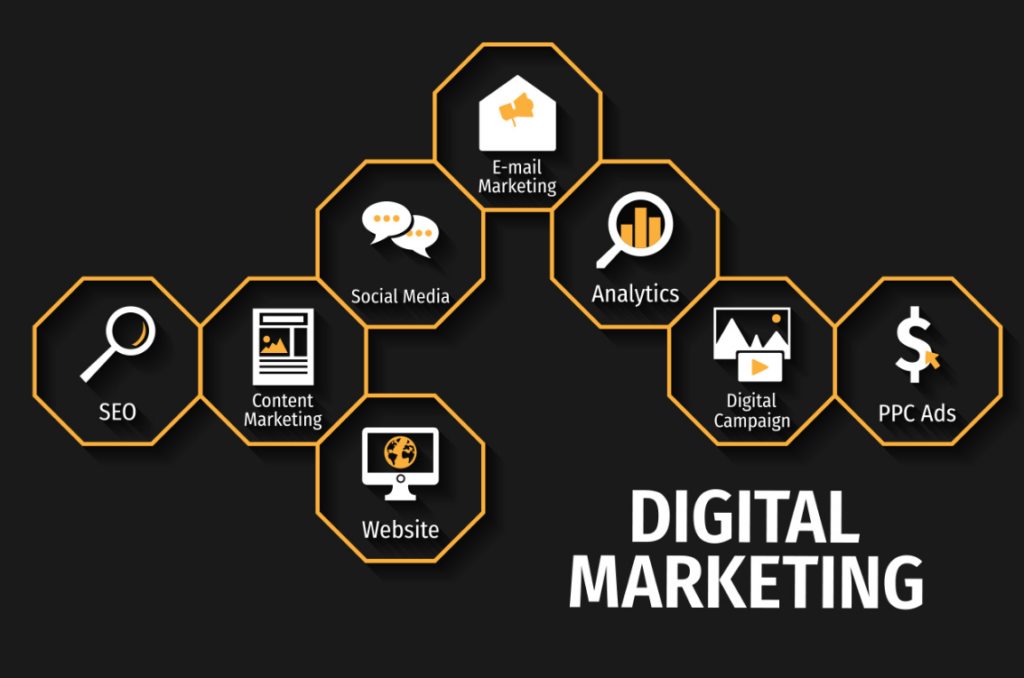
In this article we will explain the evolution of digital marketing and how it reached Artificial intelligence from introducing the first clickable banner.
What is Digital Marketing
Digital marketing refers to online advertisement of goods and services to reach a massive audience and generate sales. However, the modern-day marketing mediums were not the same if we go back in time. In the Early 90s, brands used TV, radio and newspapers to market their products.
Although, you can utilize these options today, as various advertising agencies are promoting themselves through these traditional methods. The evolution of the internet has transformed the digital marketing dynamics.
Today we have search engines like Google, Bing and social media platforms like Facebook, Instagram, where every small and established brand is marketing itself.
How Digital Marketing Started
Digital marketing began in the early 1990s with the advancement of the internet and the first search engines, marking the starting point of how digital marketing started. As online access expanded, businesses recognized the potential of reaching customers through digital channels. The introduction of web browsers like Netscape and the launch of platforms like Google and Facebook revolutionized online advertising. Email marketing also gained popularity during this time. Overall, the rise of digital marketing was driven by technological advancements and the increasing use of the internet by consumers.
Early Search Engines
Early search engines like Yahoo, Excite, and AltaVista paved the way for search engine marketing. These platforms allowed businesses to buy sponsored listings and optimize for keywords, making it easier for users to find relevant content and for companies to reach their target audiences effectively.
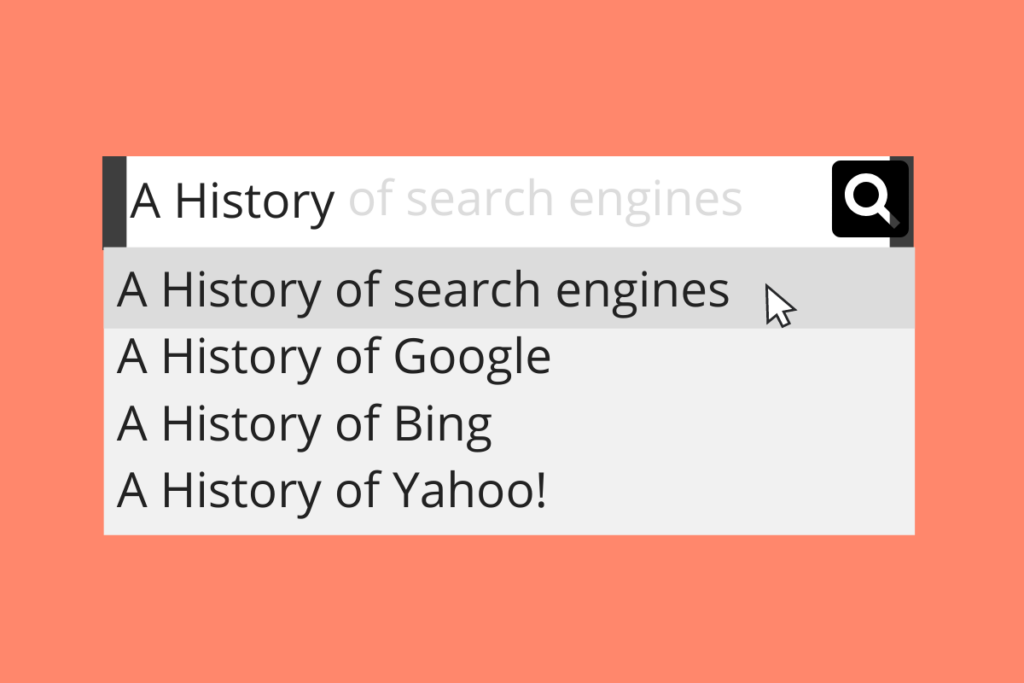
The First Clickable Banner Ad
The first clickable banner ad appeared on HotWired.com in 1994, marking the beginning of display advertising. This innovation allowed businesses to create eye-catching ads that users could click on to visit their websites, significantly boosting online marketing efforts.
Emergence of Affiliate Marketing
Affiliate marketing emerged as a way for independent marketers to earn commissions by promoting other companies’ products. This model benefited both marketers, who earned revenue, and businesses, which gained broader promotion and increased sales.
Creation of ListServ
The first email marketing software, ListServ, was created in 1986. While commercial email marketing didn’t take off until the mid-1990s, ListServ laid the groundwork for sending targeted email campaigns to large groups of recipients.
Web Analytics Tools
Web analytics tools like WebTrends provided early data and insights into website visitors and traffic sources. These tools enabled businesses to understand their audience better and optimize their websites for improved performance and user experience.
CD-ROMs and Floppy Disks in Content Marketing
CD-ROMs and floppy disks enabled content marketing by distributing valuable offline content. Companies used these mediums to share product information, catalogs, and other marketing materials directly with consumers before the widespread use of the internet.
Evolution to Dynamic Websites
Static websites evolved into dynamic sites with the advent of CMS platforms like WordPress and web servers like Apache. This evolution allowed for easier content management, more interactive features, and better user experiences on websites.
AOL’s Instant Messenger and Influencer Marketing
AOL’s instant messenger paved the way for branded conversations and influencer marketing. This platform allowed businesses to engage directly with consumers and influencers, fostering more personal connections and targeted marketing strategies.
From Conventional to Digital Marketing
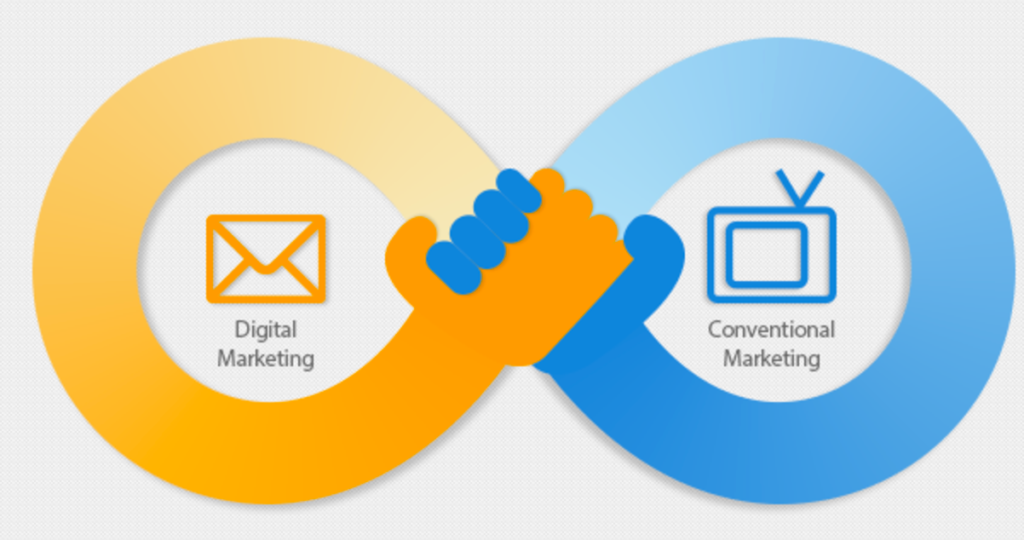
First Clickable Banner (1993)
Around 1993, the first clickable banner ad went live, revolutionizing advertising by transitioning from traditional marketing to digital marketing. This banner, created by AT&T, had a 44% click-through rate, highlighting its novelty and effectiveness. The success of this banner led many companies to enter the digital marketing space in the following year, marking the beginning of the internet advertising era.
Introduction of Yahoo (1994)
Launched in 1994, Yahoo quickly became a popular web directory and search engine, amassing about 1 million hits in its first year. This popularity prompted companies to focus on search engine optimization (SEO) to improve their online rankings. By 1996, the success of Yahoo led to the emergence of other search engines, further intensifying the SEO landscape.
Launch of Google (1998)
Google, now the world’s largest search engine, was launched in 1998. Its innovative search algorithms and user-friendly interface quickly set it apart. Following Google, Microsoft introduced MSN, and Yahoo released an updated version of its search engine, intensifying the competition in the search engine market.
Search Engine Competition (2000)
By 2000, intense competition led to the decline of many small-scale search engines, leaving Google and Yahoo as the dominant players. These companies continued to innovate and expand, shaping the future of online search and advertising.
Web 2.0 (2002)
MSN launched Live Search in 2002 to compete with Google and Yahoo, marking a significant advancement. This period also saw the advent of Web 2.0, characterized by interactive and user-generated content. Unlike the passive users of Web 1.0, Web 2.0 users could interact with businesses and each other, leading to a more dynamic online environment.
Social Media Sites (2003-2004)
The launch of MySpace in 2003 and Facebook in 2004 marked the beginning of the social media era. Brands quickly recognized the potential of these platforms for marketing their products and services. By establishing a presence and advertising on these sites, companies could engage with a vast audience and build brand loyalty.
Analytics (1994)
Although web cookies were introduced in 1994, their importance in digital marketing grew over time. Marketers realized the value of cookies in tracking user behavior and preferences, allowing for more targeted and effective marketing strategies. This shift significantly improved how companies understood and reached their audiences.
Dawning of WordPress
WordPress, which has been around for over a decade, gained immense popularity with its version 3.0 release, which included ecommerce plugins. This development made website building accessible to businesses and marketers without requiring programming skills, significantly lowering the barrier to entry for online presence and e-commerce.
Influencer Marketing
(2015) Influencer marketing emerged in 2015 as a powerful digital marketing tool. Leveraging the reach and trust of social media influencers, brands could connect with consumers more authentically. Today, 99% of digital marketers use platforms like Facebook, Instagram, Pinterest, LinkedIn, and Twitter to promote their products and services through influencer collaborations.
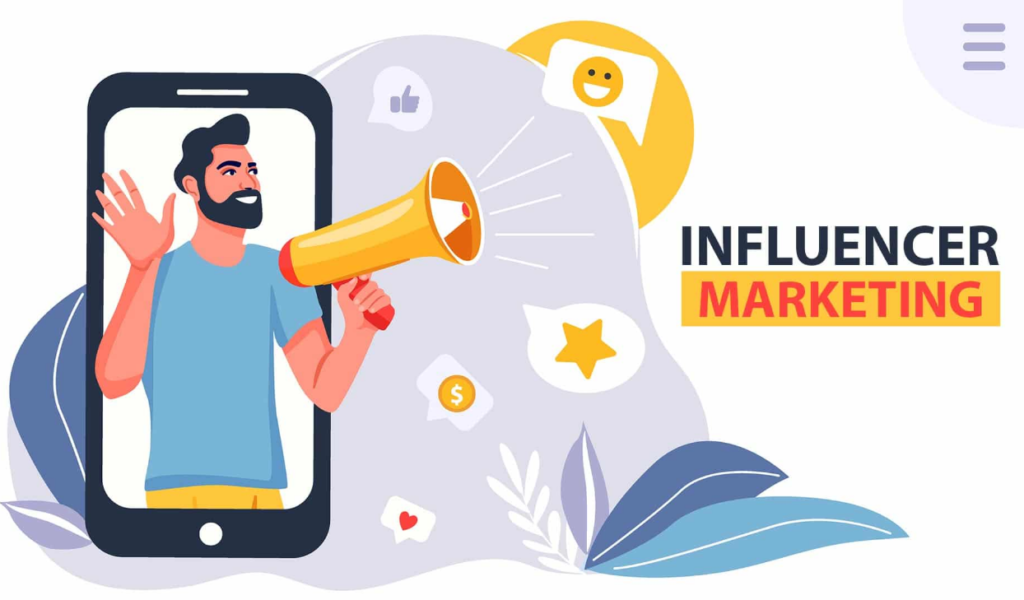
Reels and Short-form Content
The introduction of Instagram Reels transformed social media marketing strategies. This feature emphasized 60-second, short-form video content, which quickly became popular for its high engagement rates. Marketers now prioritize creating engaging short-form videos to capture audience attention and drive interaction on social media platforms.
Conclusion
The evolution of digital marketing has been driven by technological advancements and changing consumer behaviors. From how digital marketing started with the first clickable banner ads to the rise of social media influencers, digital marketing has transformed how businesses reach and engage with their audiences. Today, it encompasses a wide range of strategies, including SEO, PPC, email marketing, and content marketing.
Read more : Tips to Create Shareable Content for Viral Success
: When and Where to Start Digital Marketing
FAQs
Digital marketing refers to the promotion of products or services using digital channels, such as search engines, social media, email, and websites, to reach a large audience and drive sales.
Digital marketing began in the early 1990s with the advent of the internet and the first search engines. The introduction of the first clickable banner ad in 1994 marked a significant milestone in the field.
The first clickable banner ad, introduced in 1994, revolutionized advertising by allowing users to click on an ad to visit a website. This innovation significantly boosted online marketing efforts and marked the beginning of internet advertising.
Early search engines like Yahoo, Excite, and AltaVista allowed businesses to buy sponsored listings and optimize for keywords, making it easier for users to find relevant content and for companies to reach their target audiences.

Alex Mitch
Welcome to my blog! With over 10 years in digital marketing , I’ve seen its incredible impact on smaller businesses. Join me as we explore how digital marketing can grow your audience and boost your business. Whether you’re an experienced entrepreneur or just starting out, you’ll find practical tips and insights to enhance your digital marketing strategies.


